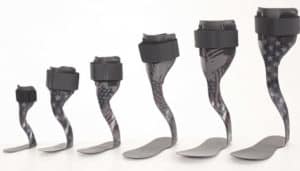- We succeed where others fail!
- 860.564.7817
- Email Us
Thermoset Resins
- Home
- Thermoset Resins
Adhesive Prepregs for Composite Manufacturers (APCM) is an industry-leading prepreg manufacturer. We specialize in the development of prepregs made from thermoset epoxy for composite part designers, manufacturers, and hobbyists.
Epoxy—also known as epoxy resin or epoxide—refers to compounds that contain an oxirane (i.e., epoxy) ring of one oxygen atom bonded to two carbon atoms in their molecular composition. It is one of the most common types of thermoset resins employed due to its ability to form a strong and durable adhesive bond when mixed with an appropriate catalyst and subjected to the proper curing conditions.
The following article provides an overview of thermoset resins, including what they are, their curing process, types available, key benefits, and typical use cases. It also discusses the role they play in prepreg manufacturing operations.

What Are Thermoset Resins?
Thermoset resins—also referred to as thermosetting resins—are polymers that undergo an irreversible curing process, meaning they cannot be resoftened, reapplied, and rehardened once they are cured. The result is a material with a cross-linked molecular structure, which translates to excellent hardness, rigidity, and thermal stability. These properties make thermoset resins suitable for use in high-temperature applications.
Thermoset Resin Curing Process
The curing process for thermoset resins can be divided into three stages:
- A Stage: The resin and curing agent are mixed, but the chemical reaction has not yet started.
- B Stage: The chemical reaction has started, and the viscosity and tackiness of the mixture have begun to increase.
- C Stage: The resin is completely cured.
If needed, industry professionals can halt the curing process at the B Stage to prepare the resins for use in future operations. For example, thermoset epoxy resins in prepregs are kept in the B stage until the material is positioned in the manufacturing equipment. Cooling the resin mixture to 0° F effectively stops the curing process. Bringing it back to room temperature starts it up again. However, some resins may require elevated temperatures to achieve a full cure.
Types of Thermoset Resins
Bakelite is one of the more recognizable brand names in thermoset manufacturing, being the first synthetic plastic produced and a common choice for consumer goods well into the mid-20th-century. However, there is now a broad range of thermoset resins available to manufacturers with characteristics that suit a diverse set of applications. Some of the most commonly used thermoset resins include:- Epoxy resins are among the most popular thermosets due to their strength, toughness, and resistance to damage from chemical and environmental exposure.
- Vinyl ester resins are more cost-effective than epoxy resins while still providing strength, durability, and corrosion resistance.
- Polyester resins are widely used across manufacturing, especially for the production of fiber-reinforced polymer (FRP) composites.
Benefits of Thermoset Resins
Compared to thermoplastic resins, thermoset resins offer a number of benefits. For example:- They are typically in a liquid state prior to curing, making them easy to work with during molding and other manufacturing operations and apply to fabrics and other fiber-based materials when creating prepregs.
- They are strong, durable, and thermally resistant after curing, making them suitable for use in demanding applications involving heavy loads and high temperatures, especially when combined with fibers, fillers, and other additives to produce composite materials.
- Chemical and solvent resistance
- Ability to form strong adhesive bonds
- Suitability for a variety of finishing operations (e.g., polishing and painting)
Uses of Thermoset Resins
Thermoset resins find use in a wide range of industrial and consumer parts and products. For example:- Epoxy resins are used for adhesives, coatings, and fiber-reinforced plastics (FRPs).
- Polyester resins are used for sheet molded and bulk molded components.
- Polyimide resins are used for printed circuit boards (PCBs).
- Polyurethane resins are used for adhesives, insulating foams, and mattresses.
The Role of Thermoset Resins in Prepreg Production
Prepregs are fabrics and other fiber-based materials pre-impregnated with resin to reinforce the material structure. Typical parts and products produced with prepregs include:- Aircraft components
- Pressure vessels
- Orthotics and prosthetics
- Circuit boards
- Insulating rods
- Pipes
- Boats
- Recreational equipment (e.g., bicycle frames, skateboards, skis, and snowboards)
- Rocket housings
Thermoset Epoxy Prepregs From APCM
Thermoset resins—especially thermoset epoxy resins—are an essential component of many prepreg production operations. In turn, the materials produced are used in the manufacture of numerous industrial and consumer parts and products. If you’re looking for a reliable supplier of high-quality thermoset prepregs, turn to the experts at APCM. At APCM, we’ve provided thermoset epoxy prepregs for composite part designers, manufacturers, and hobbyists for almost 30 years. They are available with a variety of composite fiber material options, including Dyneema®, Kevlar®, and Spectra®, and in roll, sheet, and pre-cut segment forms. While there are a few exceptions, all of our prepregs have cumulative out-time expiration dates of 30 days. However, they can be refrigerated for up to 6 months or frozen for longer storage requirements. Our composite materials are strong, lightweight, and easy to use. However, we are continuously looking for ways to improve their weight, strength, and ease of use even further. To learn more about prepreg products and services, contact us today.
// Prepregs Products
APCM, LLC. the company, we help make our customers


